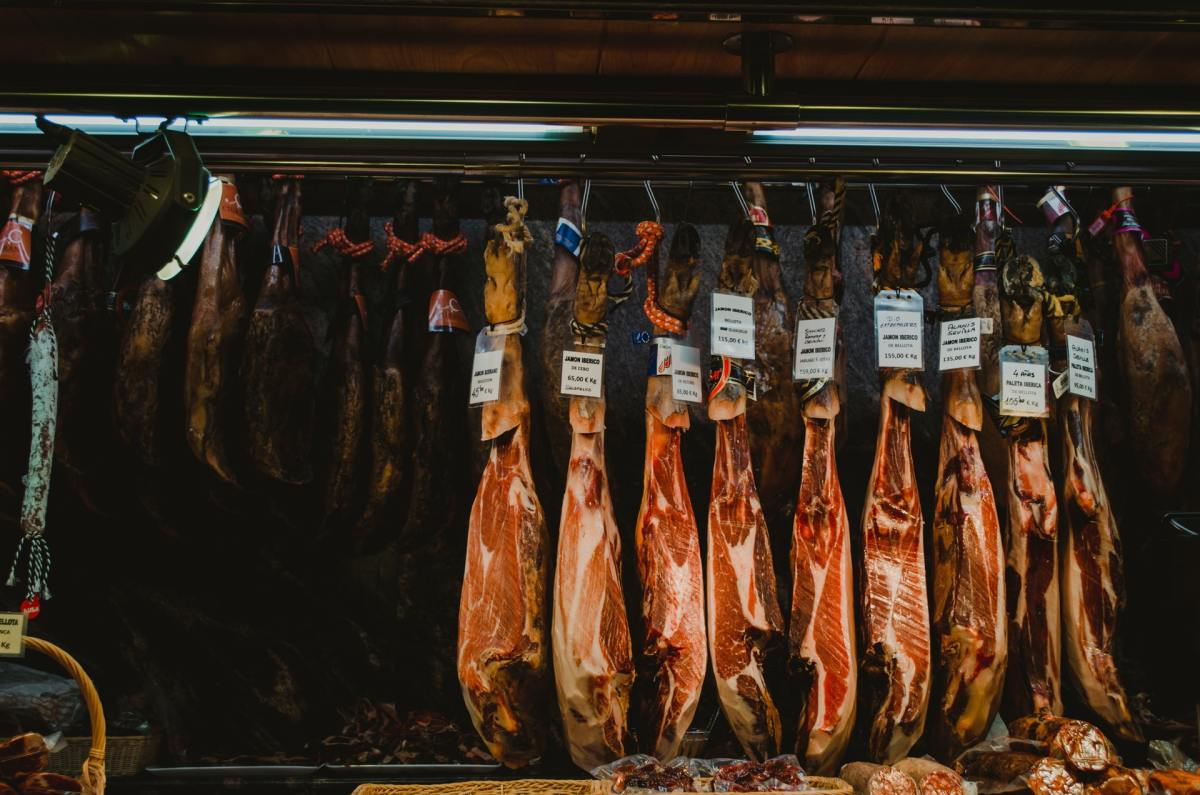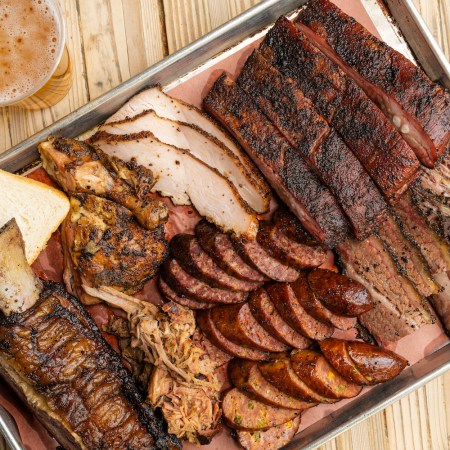Have you ever gazed longingly at an aged ham hanging on the wall of a butcher shop? There’s something uniquely delectable about a ham that’s been prepared in this way, a richness to the taste that’s hard to deny. A 2014 Eater article on the subject of aging hams described their appeal as “a particular alchemy of sugar, salt, pork, smoke, heat, humidity, mold, and time.”
How does one get from fresh pork to a delicious aged (and holiday table-ready) ham? Turns out you need a couple of things to pull it off, ideally including a cave for aging and a well-trained nose.
At The Wall Street Journal, Richard Morgan chronicles the work done by ham sellers in the Andalusia region of Spain. This is an industry where, as Morgan notes, many practices haven’t changed since the 1800s. At the heart of the article is Cinco Jotas, which a Condé Nast Traveler article dubbed “the Bentley of hams.”
Morgan highlights one particular element that’s made Cinco Jotas so prominent in its field: a team of six trained caladores, professional sniffers whose work involves smelling and evaluating the pork as it slowly ages to determine whether or not it’s up to snuff. (No pun intended.)
How many hams does a calador sniff in a day? During the busy season at Cinco Jotas, veteran Manuel Vega Domínguez estimates that he smells 800, each of them in four distinct locations on the ham. The test to become a calador involves detecting small amounts of different substances in water, and Vega and his colleagues maintain a strict regimen of scents in their daily lives to keep their sense of smell honed and ready.
“The memory of perfect ham is cooked into my brain,” he told The Wall Street Journal. Hopefully his work — and the work of his peers — will let more perfect ham come to dining rooms across the world.
Join America's Fastest Growing Spirits Newsletter THE SPILL. Unlock all the reviews, recipes and revelry — and get 15% off award-winning La Tierra de Acre Mezcal.


















